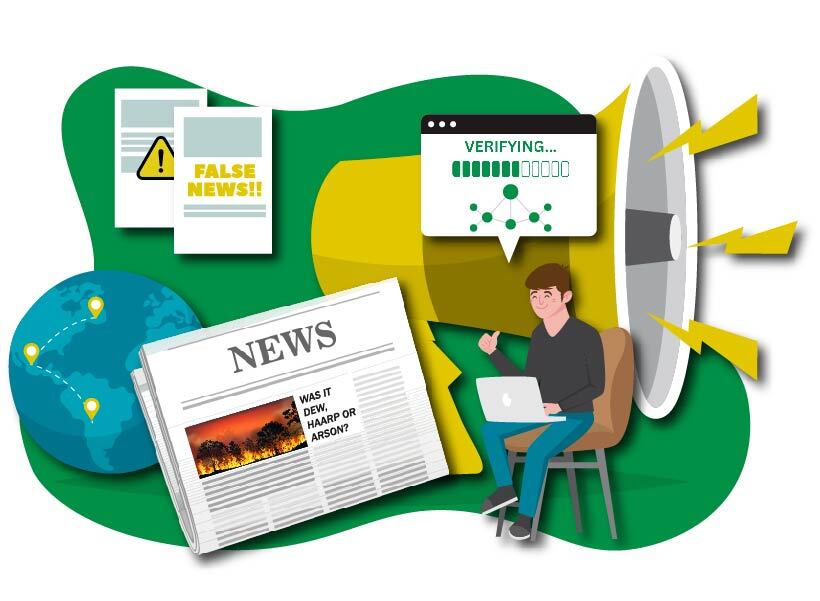By: alexander smith
November 6 2023
How to identify misinformation about natural disasters

As global temperatures rise, we experience climate change’s effects more often in the form of extreme weather events and natural disasters. While experts state that recent wildfires in Greece, Italy, and Hawaii (locally spelled Hawai’i) are the result of nearly a century of human-caused climate change, social media users repeatedly spread misinformation narratives of arson and conspiracy theories. Other natural disasters, such as the earthquake in Morocco in September 2023, also see the same narratives spread in their wake.
There are many reasons why social media users spread misinformation about climate events and natural disasters. Among those users are state-backed actors, conspiracy theorists, and people who just want to cause trouble.
Speaking on motives behind climate misinformation, Tom Johansmeyer, a PhD candidate from the University of Kent, told Logically Facts, “The motives can vary. In some cases, it's mischief. However, it can get more severe, to include the advancing of conspiracy theories (and attendant motives) and even potentially state actors. There is the potential to use post-disaster disinformation - via state actors or state-accommodated actors - to destabilize affected populations and foment civil unrest.”
Whatever the source, they often incorporate the same set of conspiracy theories and climate change denial narratives. This guide from Logically Facts will help you identify misinformation and stop the spread of misattributed images and false narratives.
What kind of misinformation follows a natural disaster?
After a natural disaster, you’ll often see:
- Images and videos from previous natural disasters
- Manipulated images that suggest the event was directly caused by humans.
For example, a video recently went viral along with a claim that it was shot in Libya after recent flooding. However, research showed it was filmed over a month earlier in Beijing after typhoon Doksuri caused flooding in the city.
There are a few things you can do to check if a video or image of a natural disaster is authentic:
- Check the account that posted the footage:
- Is it the original source of the video?
- Where are they based?
- Have they posted disaster-related images and videos before?
- Is there anything in the image that looks suspicious?
The image may have been digitally altered if something looks like it shouldn’t be there. It is common to see pictures of hurricane sharks circulating after floods, which are shared to shock and alarm people. After the recent wildfires in Maui, images showing a laser beam striking a building were widely shared. However, it turned out to be digitally altered.
You can find more tips for identifying misleading images here.
Common trends to look out for
Some of the most common conspiracy theories claim that natural disasters are caused deliberately by governments or bad actors looking to blame specific groups, such as migrants. Here are some of the most common subjects that crop up after a natural disaster:
HAARP
HAARP, the High-frequency Active Auroral Research Program, is often blamed for causing natural disasters. It is a research base in Alaska that uses high-frequency radio signals to study the ionosphere. It uses these radio signals for just a few seconds and a few hours each year. It does not have the ability to cause changes to the environment.
Human-caused fires
Some wildfires are caused by people, whether as a purposeful act of arson or by negligence or accident, such as a fire caused by a spark from a cigarette or machinery. Whatever the cause, the weather can affect the severity of a fire - it depends on the strength of the wind and how dry the environment is. Hotter, drier conditions tend to help create more severe wildfires.
Directed Energy Weapons (DEWs)
Like HAARP, DEWs are often blamed for causing natural disasters, and while they do exist, the technology behind them is not capable of causing destruction on a large scale.
The basis of climate change denial
While the global scientific community agrees that human-caused climate change is real and is getting worse, many people believe it’s a hoax or is not as bad as climate change activists and scientists say.
The fossil fuel industry has the most to lose from a global shift towards renewable energy sources and has worked hard to downplay the role of fossil fuels in climate change since evidence was produced in the 1940s that they damage the environment.
How can we avoid falling for climate misinformation?
The best way to avoid falling for misinformation is to think critically and not take things at face value. Johansmeyer told Logically Facts, “The best thing people can do is look out for each other and focus on what is demonstrably true. I'd love to see [social media platforms] make progress, but it's been slow-going, and I don't see that likely to change, unfortunately.”
While individual action is important, Dr. John Dryzek, Professor at the Centre for Deliberative Democracy and Global Governance at the University of Canberra's Institute for Governance and Policy Analysis, told Logically Facts, “The solution is to take political action to change government policies and political-economic structures.”


